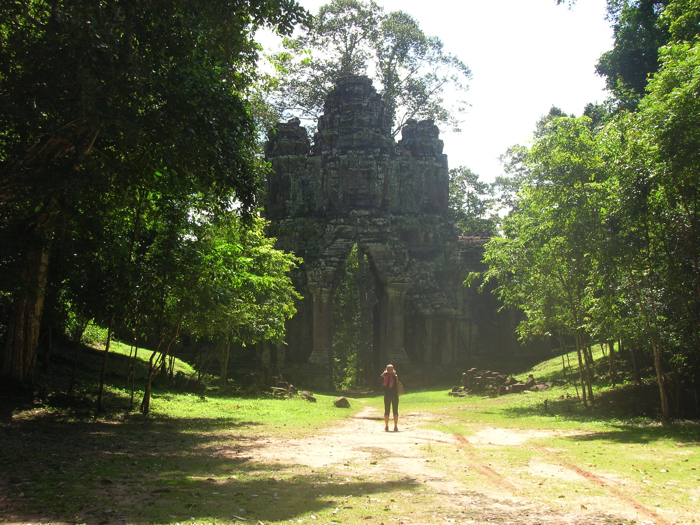- Project Leader : Matsuura Fumiaki (Graduate School of Global Studies, Sophia University)
- Collaborators : Sakurai Yumio (The University of Tokyo, Professor Emeritus)
- : Shibayama Mamoru (Center for Southeast Asian Studies, Kyoto University)
- : Tabata Yukitsugu (Asia Center for Research and Human Development, Sophia University)
- : Miyazaki Akiko (College of Literature, Ibaraki Christian University)
- : Sato Keiko (Faculty of Foreign Studies, Sophia University)
Outline of Research
In this collaborative research, we would like to demonstrate the tree structure of power in the late Angkor period, after the end of 10th century, through synthesizing knowledge from various disciplines (for example, philology, archaeology, art history and Baray studies) which are concerned with the relation between the central area of Angkor and the regional center of its domain. This research aims to clarify what was the meaning of the Royal Road and its transition.
For this purpose, we intend to create a multi-disciplinary “Royal Road database” through several workshops and field research.
Description
Through this research, the Angkor period, which lasted around 6 centuries, did not continue as an unchanging structure, but can be divided into two periods; between, before and after the end of 10th century. Between both periods, clear differences can be seen in the growth of regional bureaucracy, the expansion of commerce networks based on temple networks, the localization of Baray (which were first established in the capital of Angkor in the early period), differences in religion and art between some regions, and the distribution of the temple remains and relics along the Royal Road.
The research group thinks that, these phenomena do not signify the separation of the regions from the capital, but the emergence of a tree like structure of power that was closely connected by the Royal Road network which stretched over an extensive region. Therefore, our goal is to clarify the power structure in the late Angkor period through elucidating the netlike structure of the Royal Road which lies in mainland Southeast Asia.
In previous studies, the Royal Road of Angkor was dealt with in relation to land expansion during the reign of King Jayavarman VII. However, there is no study that correlatively combined the netlike distribution of the Royal Road including regional phenomena such as temples, regional centers, Baray, etc. Thus, this research can provide a new contributory multi-regional/ multi-disciplinary viewpoint.
Results are expected in the following areas 1) to make up a chronological map of the Royal Road distribution, 2) to clarify the political, economic, religious complex structure at each regional center through making up a database of inscriptions, Baray, remains and relics that were discovered within the regional center of the network, 3) and to frame the “Royal Road database” combining the satellite information and the results of bellow.
 The ancient bridge of Angkor (Spean Kompong Kdei) |
 East gate, Angkor Thom |
